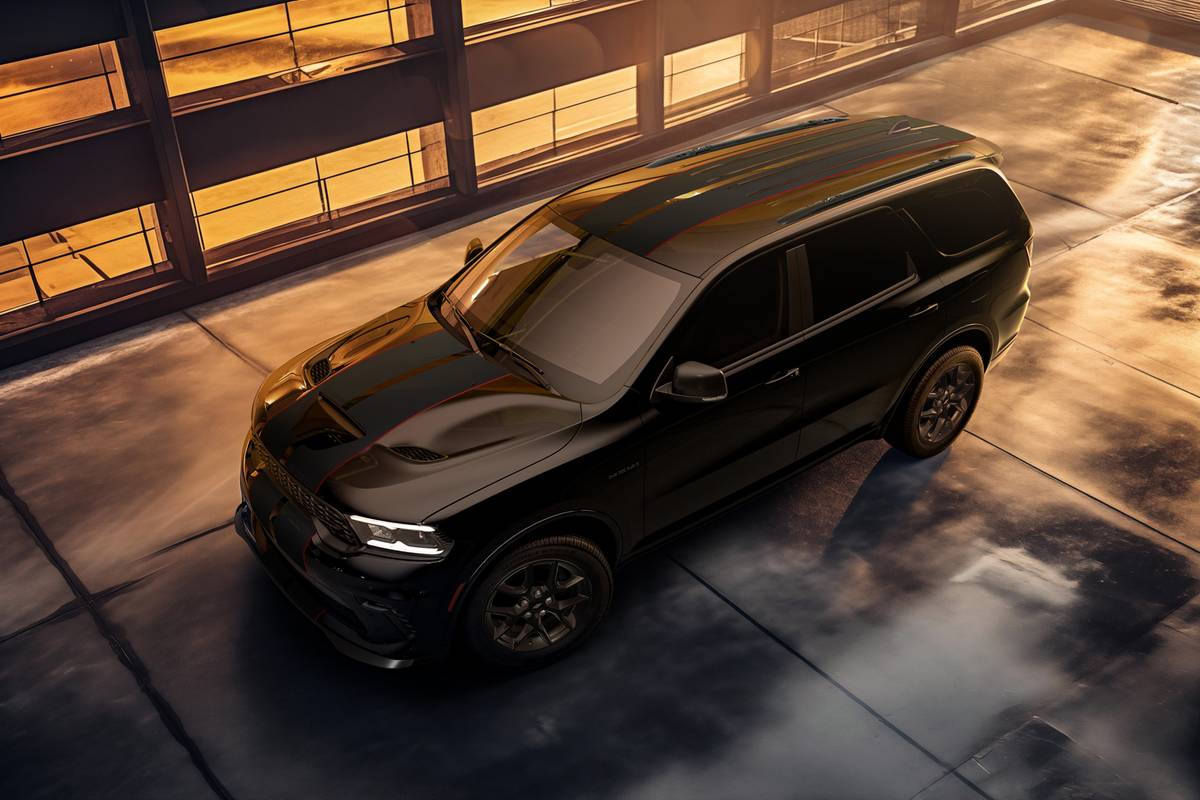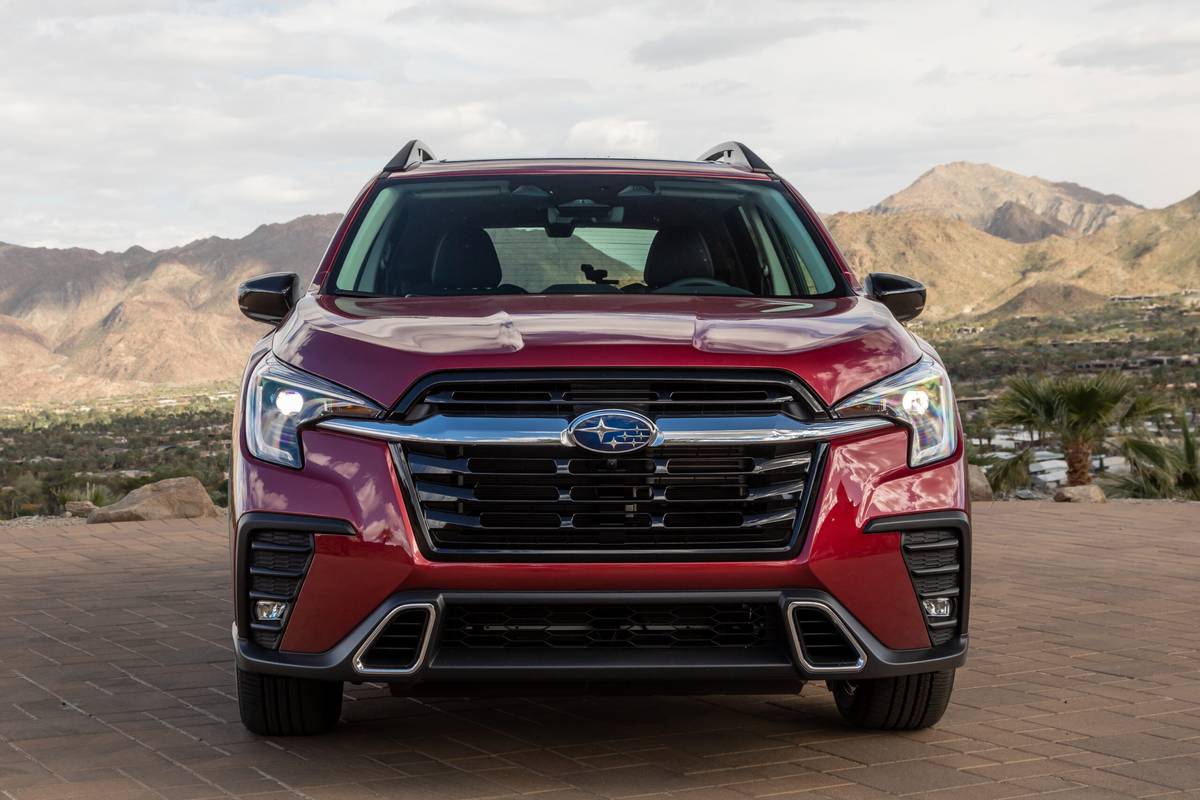Boston.com's view
Sure doesn’t sound like a Subaru.
There’s a nice little burble that emanates from the exhaust.
Sure doesn’t accelerate, or ramble down the highway like a Subaru.
There’s a steady, if not neck-stiffening, briskness at takeoff; a sure and powerful surge in the commuter passing lane of the highway.
Ah, but this is not the Subaru, with the weak, flat-four engine that, while it had a certain cult appeal across New England, also limited its own sales because lots of folks wanted, frankly, more power.
Now comes the Outback H6-3.0. That’s six horizontally opposed cylinders, 3.0 liters of them, cranking out 212 horsepower – up nearly 50 ponies from the flat-four. This engine is a great move for Subaru (with one caveat to be dealt with later, and no peeking ahead) because, while many folks want the utility and power that big SUVs offer, they find the bigger rigs to be, well, politically incorrect.
This engine, plunked into an all-wheel drive, modest-size wagon, plants Subaru firmly in a growing niche of SUVs-that-are-not-SUVs that appeal to these folks.
It’s an all-wheel-drive-all-the-time wagon, splitting its torque 45/55 front to rear on dry roads. When things get slippery, sensors regulate brakes and throttle to control spinning wheels.
As a commuter car, it is smooth and strong, running at passing lane speeds at just over 3,000 RPMs. Yaw control and fully independent suspension – struts, coil springs, antiroll bars, control arms, and multiple links – keep it flat even in abrupt lane changes and during sharp cornering.
Offroad, its all-wheel drive and traction-control system make it a patient handler of even deep snow. Just press the gas, steer where you want to go, and let it work its way through the challenge. Its muck, mire, and offroad performance is aided by an ample ground clearance of just over 7 inches. That’s only an inch lower than a Ford Explorer.
The only transmission available is a four-speed automatic, which seemed to shift a little sooner than I would like. Also, the seven-stop shift pattern had too many odd notches up and down the line, making it hard to be sure which setting you were really in.
Subaru is trying to go upscale with this model (and its companion L. L. Bean signature edition), and standard features are plentiful. The Subara Outback H6-3.0 comes with leather seats, dual power moonroofs, power windows and locks, and more. You get leather seats (heated up front), dual power moonroofs, automatic windshield wiper deicers, power windows, locks and mirrors, and front and side impact air bags.
And you also get – be still my heart – a McIntosh sound system with 11 speakers. This is one of the best stock sound systems I have ever heard in a car.
Seating is quite comfortable for two up front and two in the rear. A third rear-seat passenger would be squeezed on long trips.
It’s also got nice cargo space, considering that this is not really a big automobile, and if you fol d down both sides of the 60/40 split rear seat, you can pack it with lots of goodies. You won’t be hauling sheets of plywood, but this car is not aimed at folks who want a vehicle that will do that.
Ergonomically, it is a wonderfully planned auto. Audio and climate controls are simple and easy to grasp. The heater and defroster system warmed up very quickly.
If I have one major mechanical complaint with the Outback, it is its four-disc brake system. It just doesn’t stop the car as firmly as I would like, and that is odd for a smaller wagon like this.
I often had the sensation, during even moderately hard braking, that even though the pedal was pushed, it needed to be pushed just a bit more. Maybe this owed to the car’s weight – almost two tons. How’d they make it so heavy?
And now about that caveat.
I really don’t know if enough people are going to be willing to pay more than $32,000 for a Subaru. This is a big leap, pricewise, for Subaru.
They’re going to have o compete with the Toyota RAV4, Ford’s delightful Escape, and Hyundai’s new Santa Fe, all of which can be had, fully loaded, for $6,000 to $10,000 less. For the same money, you can look at Volvos and Audis, among other fine cars.
Subaru has definitely advanced its stable with this car. But they’ve advanced it mostly with the engine (and the yaw-control system), but they seem to have done it at a pretty steep price.
If I’m Subaru, I start looking right away for ways to get this engine into less pricey boxes.
Nice touch:
The use of the tuning dial on the radio as an optional scanner. Click it once to the right until it hits a station. Find one you like, click it right again, and it freezes there. Easy to do with both eyes still on the road.
Annoyance:
The cheap plastic that forms the lower door panels. If you’re going to run in the $30,000-plus league, you can’t do it with swaths of plastic.
Latest news



